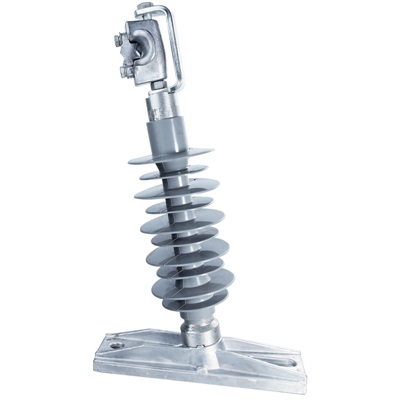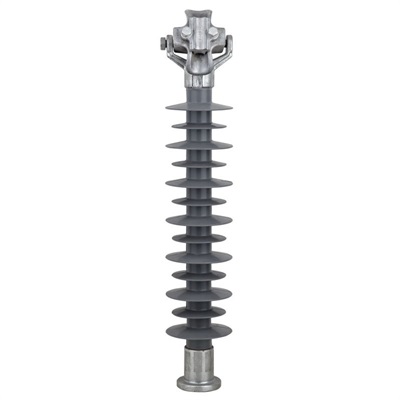Although the initial commercial deployment appeared in the United States, it is generally expected that the initial 3G deployment will be carried out in Asia. Operators in the region are recognized as the global leader in the deployment of femtocell base stations, both in terms of time to market and the maturity of the products they recommend. This article will introduce the main challenges and countermeasures for the deployment of femtocell. Why use femtocell? Femtocell is a user's residential cellular access point, which accesses the mobile operator's core network through the user's broadband connection. Femtocell can provide high-quality voice, the best data rate and cheaper tariffs for calls and connections initiated at home, all of which can be achieved using standard mobile phones. Most operators around the world focus their efforts on two areas, namely coverage and capacity. This is correct whenever possible. At present, the indoor coverage of 3G networks is not good, and the concentration of the main capacity on the backhaul network means that mobile broadband services cannot support a wider range of applications. Femtocell technology will permanently solve these problems, because it can provide the best coverage for all homes that initiate most mobile calls, and can also provide an exponential growth in the capacity of the backhaul network. In addition, it is also of particular interest to the Asian market, where femtocell can bring opportunities for flexible business models and innovative value-added services. Many people will compare femtocell with WiFi / dual-mode products with limited applications in recent years. In fact, there are many differences between them. WiFi is a good alternative to Ethernet cable technology, but the technology is mainly designed for devices (such as laptops) that can be connected to an external power supply or have a large-capacity battery. Unlike cellular technology, WiFi lacks adaptive power management. Therefore, the most prominent problem caused in the mobile field is that the battery-powered time of mobile phones using this technology is very short. While cellular technology is very sensitive, it can reduce the power when close to the base station, thereby saving battery energy. This allows femtocell technology to bring an additional benefit, which is to greatly increase the battery life of mobile phones. In addition, femtocell supports all standard 3G mobile phones, without the need to add additional BOM and integration costs like adding WiFi functions. Femtocell technical difficulties Many suppliers and industry observers have emphasized the potential problems in femtocell technology research and development. The four most frequently mentioned areas are how to reduce interference, remote management, power consumption and standardization. Objectively speaking, all these four aspects are indeed very challenging. The success of the femtocell market depends on whether these problems can be successfully solved, and how much time and effort is required to solve these problems. Interference: In the traditional macrocell network deployment, in order to ensure that there is no interference between each cell, an experienced field engineer is required to perform a large number of settings and optimizations for each base station. This is a time-consuming process that requires planning in advance and a large number of field observation tests. But for femtocell it is not the case. Users simply take the device out of the box, plug it in and connect to the broadband network to work. At the same time, operators must also ensure that these femtocells will not interfere with their macrocells. Femtocell must also be able to solve problems that occur when it is moved to a location, placed next to other equipment, or even placed outside by a corporate user trying to provide a telephone service to a neighbor. The solution to these problems is to use so-called "cognitive radio" technology. This refers to the radio circuit in femtocell constantly monitoring the radio frequency environment and setting itself according to the situation. Ubiquisys ’equipment will be monitored every 100 seconds. It will passively listen to neighboring base stations and femtocells to ensure that there is no interference. At the same time, it listens to the RF environment to ensure that its signal can cover the room space where it is located without being too strong . Power: Power consumption is another factor to consider. Although the initial temptation was that femtocell suppliers could create a streamlined version of picocell base stations, a key requirement for home cells is to meet the power limitations of consumer electronics products and keep quiet work without fans. Furthermore, when used as an integrated module in an existing home gateway product, it must meet cooling and power constraints without much redesign. Ubiquisys has managed to solve these problems and designed a fanless module, which has been successfully integrated into Motorola and Netgear's home gateway products. As an additional benefit, as operators increasingly seek to enhance "green" qualifications, femtocell can help them reduce the overall power consumption of the network. Integration standards: Operators need not only the equipment in the user's home to deploy femtocell, they also need the equipment in the mobile center to integrate millions of devices into the network. Unfortunately, the existing network design only supports thousands of base stations, not millions, so a brand new solution is needed. The femtocell supplier's approach is very different from some of the private methods that are being deployed, and some practices use various standards in the telecommunications industry. The private solution means that the operator must choose the femtocell and the gateway equipment in the core network from the same supplier. Operators focusing on the long-term evolution of mobile networks use SIP / IMS for integration, supplemented by UMA / GAN standards that dominate the field of dual-mode FMC compatible with current networks. In addition, the femto forum, femtocell industry association, and 3GPP have agreed on the basis of Iuh. Iuh is a femtocell-specific standard that will be completed by the end of this year. Ubiquisys has announced support for all these open standards, including GAN, SIP and Iuh. Management: There are actually more challenges. Similarly, the integration of femtocell is very different from its similar node b, as is the management. Unlike traditional network architectures, femtocells are deployed in large numbers and are installed by users themselves, so monitoring and configuration must be completely automated and managed remotely by mobile operators. Needless to say, the operator cannot send an engineer to drive a car to modify or upgrade the software on the spot as it does with a macrocell base station. It needs to be reiterated that different femtocell providers use different methods, some suppliers will develop special solutions, and some suppliers will adopt existing standards. Thus, the interoperability risks between femtocells still exist. This time the supplier promised to adopt a standardized solution for the entire IT industry, especially how the ISP manages millions of DSL modems, namely TR-069 protocol. Ubiquisys has realized that this is an ideal solution and adopted the standard-this practice was subsequently accepted by the femtocell forum. This TR-069 standard, adopted by about 30 million fixed broadband devices worldwide, has proven that it can help operators provide simpler installation and configuration, achieve advanced fault diagnosis and treat millions of terminals in a particularly cost-effective manner The device performs remote firmware and service upgrades. Summary of this article Although developing and deploying femtocell networks will encounter many technical challenges, objectively speaking, many problems underestimate the industry's ability to solve them. The method of streamlining existing picocell or node b should not be adopted. Femtocell should be designed from scratch. The advantage of this solution is that it can use various existing standards and innovative technologies. Composite Post Insulator,also known as Composite Polymer Post Insulators or silicone rubber insulators,which is made of one piece of porcelain but has fixing clamp arrangement are in both top and bottom end. As the replacement of porcelain insulators, Composite Long Rod Post Insulators have many advantages compared to porcelain insulators. Post Insulator are ideal for use in hvac, hvdc and in most hv application.
7.The installation size is the same as porcelain in type, they can exchange to use each other
MAIN DIMENSIONS AND STANDARD PARTICULARS
Type
33KV 10KN Horizonal
33KV-10KN Vertical
Rated Voltage(KV)
33
33
Rated mechanical strength load(KN)
10
10
Creepage distance(mm)
1080
1385
Structure height(mm)
550
708
Insulating distance(mm)
341
526
Lightning impulse withstand voltage(KV)
245
-
1 min wet power frequency withstand voltage(KV)
110
-
Standard
IEC61952
IEC61952
We warmly welcome friends both domestic and abroad to visit our company, if you have any questions, please contact with us directly. Post Insulator,Composite Post Insulator,Composite Long Rod Post Insulators,Composite Polymer Post Insulators FUZHOU SINGREE IMP.& EXP.CO.,LTD. , https://www.cninsulators.com
Features
1.Excellent anti-pollution performance, suitable for high polluted area
2.Free of cleaning, economical maintenance and suitable for difficult maintenance area
3.No need of zero value check
4.Light weight, easy and economical to transportation and installation
5.Not brittle, and reduce the purchasing quantities for spare parts
6.Use in HVAC, HVDC and in most HV application.


Design challenges facing femtocell base stations
Over the past two years, the femtocell industry has entered the mainstream market from a special market that is not known, and people have generally recognized that this technology is the most breakthrough in the history of mobile communications business. technology. Although the field is still dominated by start-up developers, many large suppliers have recently announced investments in the field, including Qualcomm, Google and T-Mobile.